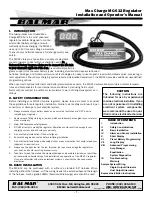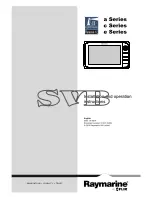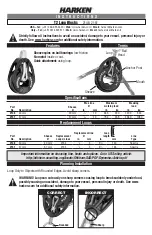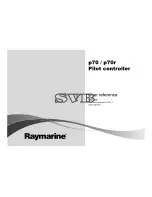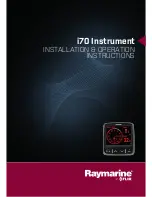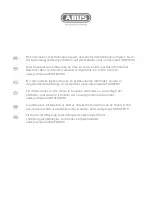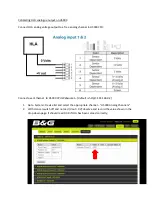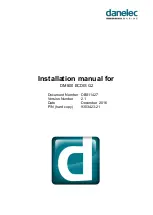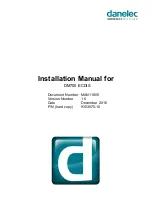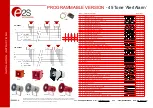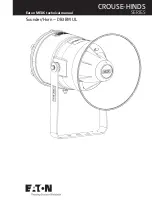
IX. SYSTEM TROUBLESHOOTING
Determining the causes of failures in an electrical system is a “step by step” process. We recommend that you inspect and clean all system
electrical connections before you begin your search to determine if the failure can be attributed to one of the two main components of your
charging system: the alternator, and/or the voltage regulator.
M
Mo
os
stt c
ch
ha
arrg
giin
ng
g s
syys
stte
em
m p
prro
ob
blle
em
ms
s w
wiillll b
be
e c
co
orrrre
ec
ctte
ed
d b
byy p
pe
errffo
orrm
miin
ng
g tth
he
e ffo
ollllo
ow
wiin
ng
g s
stte
ep
ps
s..
1.
Remove and clean all charging system electrical connections from the alternator through the batteries (this includes the ground side).
Also, check the voltage regulator’s harness for resistance. Wires and terminals can and will become corroded and need to be cleaned or
replaced.
2.
Charge all batteries to their proper fully charged state and determine if they are serviceable. If your batteries are flooded-type, use your
hydrometer to determine their condition.
3.
Check and tighten alternator belt. If the belt shows signs of wear or damage, now is an ideal time for replacement. Always replace exist-
ing belts with the finest quality replacements available.
After determining that your batteries and wiring are in suitable condition, use the following tests to determine if charging problems are a result
of a faulty alternator or regulator. The following tests provide an opportunity to isolate the alternator, regulator and wiring harness in order to
determine which component may be malfunctioning. In order to preform these tests, you will need an independent multimeter (preferably a
digital type). In an emergency, a 12V light bulb can be used to help determine if power or working grounds exist. An amp meter and a battery
hydrometer with a thermometer are also helpful diagnostic tools.
Alternator /Regulator Field Tests
T
Te
es
stt A
A - The alternator and regulator can be tested for function by determining if a magnetic field exists at the alternator’s pulley shaft or rear
bearing. To test:
1.
With the ignition in the OFF position, place the head of a steel screwdriver near the nut on the pulley shaft or near the rear bearing of
the alternator. There should be no evidence of a magnetic field pulling the screwdriver toward the alternator.
2.
Engage the ignition, without starting the engine, to activate the voltage regulator. If an oil pressure switch is used, a jumper across the
switch will activate the regulator.
3.
After allowing time for the regulator’s start-up delay, place the head of a steel screwdriver near the nut on the pulley shaft or near the
rear bearing of the alternator. There should be evidence of a magnetic field pulling the screwdriv-
er toward the alternator. If a magnetic field is present, the voltage regulator, alternator brushes
and rotor are likely to be working properly. If the system is not charging, remove the alternator
and have it inspected by a qualified alternator shop.
T
Te
es
stt B
B - If there is little or no magnetic pull at the pulley shaft or at the rear bearing, initiate the follow-
ing test:
1.
With the key off and the engine off, remove the large harness plug from the regulator.
2.
Insert the end of a short length of electrical wire to the RED connector slot of the regulator har-
ness and the other end of the wire to the BLUE connector slot. (See Figure 18.) This bypasses
the regulator and tests the alternator and the harness.
3.
Using your steel screwdriver, inspect for a magnetic field as described above.
4.
With your voltmeter, check for voltage on the blue wire at the alternator. If voltage does not exist,
the harness may be at fault. If voltage does exist at the harness, but charging is not occurring,
the alternator is likely to be malfunctioning.
If a magnetic field is present. Both harness and alternator brushes and rotor appear to be working properly. If no magnetic field is present, pro-
ceed with the next test.
T
Te
es
stt C
C - Testing the actual output of the alternator is known as “Full Field Testing”. This can be accomplished by jumping a positive 12VDC
current to the field terminal at the rear of the alternator. This test eliminates both the regulator and the harness, making it easier to isolate
your investigation to the alternator. CAUTION: Ensure that all voltage sensitive equipment is turned off prior to starting the engine. Voltage is
unregulated during this test and could damage sensitive electronics. DO NOT let the engine run any longer than necessary to detect charg-
ing.
To test the alternator:
1.
Clip a jumper wire to the positive post of the alternator, or on the battery side of the isolator, if an isolator is in use. Use a SHIELDED alli-
gator clip for post attachment. Unintentional contact between the alligator clip and the alternator case could result in damage to your
electrical system.
2.
Disconnect the field/stator plug from the rear of the alternator and attach the other end of the jumper wire to the alternator’s Field ter-
minal (F). Attach a female spade connector to the field end of the wire for a solid connection. CAUTION: Do not allow the wire to contact
the case while it is attached to the positive post. The case is grounded and severe damage could occur.
3.
The regulator is now bypassed. When the ignition is engaged and the motor is started, the voltage should rise and charging current
should be present.
4.
The motor should be run long enough to determine that charging voltage is present. Unregulated voltage can rise quickly. Do not allow
extended unregulated charging to occur without carefully monitoring voltage levels.
If the alternator fails to generate voltage during field testing, a malfunction of the alternator is likely. Contact your local alternator repair
shop or Balmar’s technical service staff for recommendations.
- 7 -
R
Bl
F
Fiig
gu
urre
e 1
18
8 - Jumping power wire to
field.

